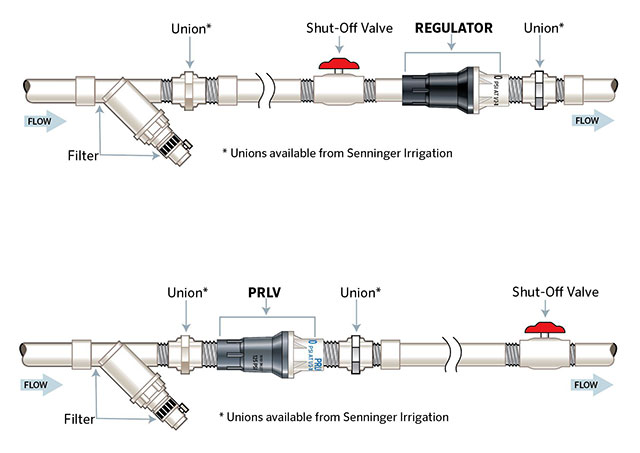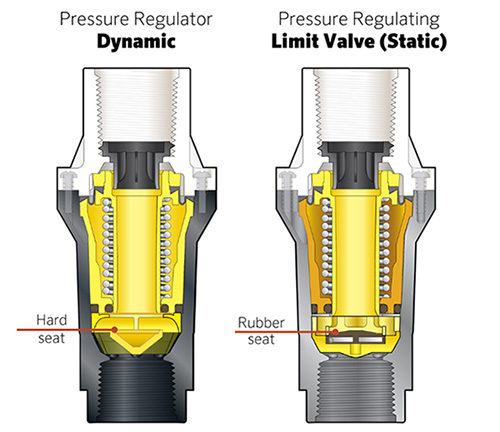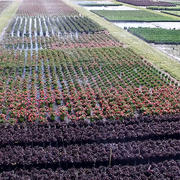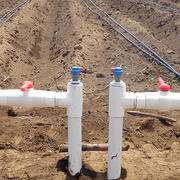Both a pressure regulator and a pressure regulating limit valve maintain a constant outlet pressure when handling rated flows. The difference comes when there is no flow through the device.

Pressure regulating limit valves are designed to control pressure when there is NO water flow through the device. In contrast, a standard pressure regulator will not regulate without flow.
Controlling pressure when there is no water flowing through a system might seem strange, but consider that some irrigation systems have their shut-off valves downstream, as shown in the image above.
When the downstream shut-off valve is closed, there is still pressure in a system but no water flow. The high inlet pressure eventually equalizes across the regulator and down to the shut-off valve. When this shut-off valve is opened again, a high-pressure surge can damage downstream meters, sprinklers and other components.
A pressure regulating limit valve can protect these components.

How does a limit valve work?
If we were to place a standard pressure regulator upstream, the regulator’s T-stem will be unable to completely seal against the hard seat in the device to stop the flow. A pressure regulating limit valve is designed so that its t-stem closes the flow-passage and seals on the rubber portion of the seat.
This holds the pressure 10 to 15 psi (0.69 to 1.03 bar) above the design pressure and helps protect downstream components from a high pressure surge.
Static pressure regulators, like our Pressure Regulating Limit Valve (PRLV and PRXF-LV), must always be installed upstream from all shut-off valves and filters in the proper direction. Each model has a directional arrow on the side that shows the direction of the flow. This arrow should point downstream, toward the sprinklers and emitters.
Dynamic pressure regulators must always be installed downstream from all shut-off valves and filters in the proper direction. Each model has a directional arrow on the side that shows the direction of the flow. This arrow should point downstream, toward the sprinklers and emitters.
With either device, it's recommended to use a filter upstream is (100 mesh or finer, capable of flowing up to 18 GPM with no more than 5 psi internal friction loss).
Going in-depth into pressure regulator fundamentals
Check out the pressure regulator guide to learn more about the importance of maintaining correct system pressure to conserve water and energy, troubleshooting tips, and answers to FAQs.
Learn the fundamentals of pressure regulation with Senninger's free on-demand pressure regulation course on Hunter University. Learn how to install pressure regulators in different irrigation systems, select a model, identify wear issues, causes of pressure fluctuations and more.



